Mad Hedge Technology Letter
October 31, 2022
Fiat Lux
Featured Trade:
(MAYBE NEXT GENERATION)
(JD), (BABA), (HUAWEI), (GOOGL), (TENCENT)

Mad Hedge Technology Letter
October 31, 2022
Fiat Lux
Featured Trade:
(MAYBE NEXT GENERATION)
(JD), (BABA), (HUAWEI), (GOOGL), (TENCENT)

For all the China lovers out there who think buying Chinese tech after the dip is a good idea – I have bad news for you – it’s just a dead cat bounce.
Don’t be fooled into thinking just because Chinese tech stocks became cheap, it’s a good entry point into corporate China.
It’s not.
The truth is that this isn’t your father’s China.
The situation has dramatically changed in the last 10 days so much so that I will say with conviction to stay away from Chinese technology stocks perhaps forever, almost, like it’s the black plague.
The place is totally done after China’s Chairman Xi Jing Ping was “re-elected” for his 3rd successive five-year term as the authoritarian leader of the East Asian nation.
Investors have also listened to my advice as Chinese tech shares have been thrown out with the bath water from Hong Kong to mainland China.
Many investors want no more part of China Inc. which is ironic since this was the place they couldn’t get enough of just a few years ago.
Why have investors been so jittery anyway?
Essentially, Chairman Xi packed the Politburo standing committee, the core circle of power in the ruling Communist Party of China, with his friends, poker buddies, and allies.
It was only just recently when China was tightening the tech environment before with examples littered around the country such as putting the shackles on the founder of ecommerce firm Alibaba (BABA) Jack Ma.
The Chinese communist party blocked his IPO of Alibaba’s finance arm Ant Group resulting in mass shareholder losses.
The backdrop has only soured significantly since then.
Under Xi’s leadership, China has implemented a raft of policies that have tightened regulation on the tech sector in areas from data protection to governing the way in which algorithms can be used.
JD.com (JD), Alibaba, and Tencent laid off thousands of employees in April due to tightened regulations and a slowing economy.
What are the rest of the unintended consequences?
A stronger dollar and weaker Chinese yuan just for starters.
It’s no secret that China hoovers up as many dollars as it can find, but in the meantime, the Chinese yuan is under relentless pressure from its underperforming economy, poor government policies, and gargantuan federal debt load.
Tech innovation will drop off a cliff.
Before, Chinese tech innovation meant stealing ideas and IP from Americans, but it will be harder now that this is a bipartisan issue in the US Congress.
China will also slow down the rollout of new tech products simply because they can’t acquire the advanced chips they need to build their products.
Just look at Huawei that was once counted as one of the most popular smartphones in Europe. Nobody buys their phones anymore because Google-based apps are banned on Huawei phones.
Most chilling of all, Chinese tech workers won’t be incentivized to take any risk in an environment that will penalize them by who knows what at this point.
That means many of these firms will be playing it safe yet be pushed by boss, CEO, and the communist party to beat America in the tech race for global hegemony.
In short, America has won and China faces a stark future of mediocrity in the tech space. They churn out a high volume of tech employees but industry can only develop so far by copying. It’s impossible to out-copy oneself or others into the lead.
It’s getting so bad in China that even investor Ray Dalio has stopped cheerleading for the Mandarins.
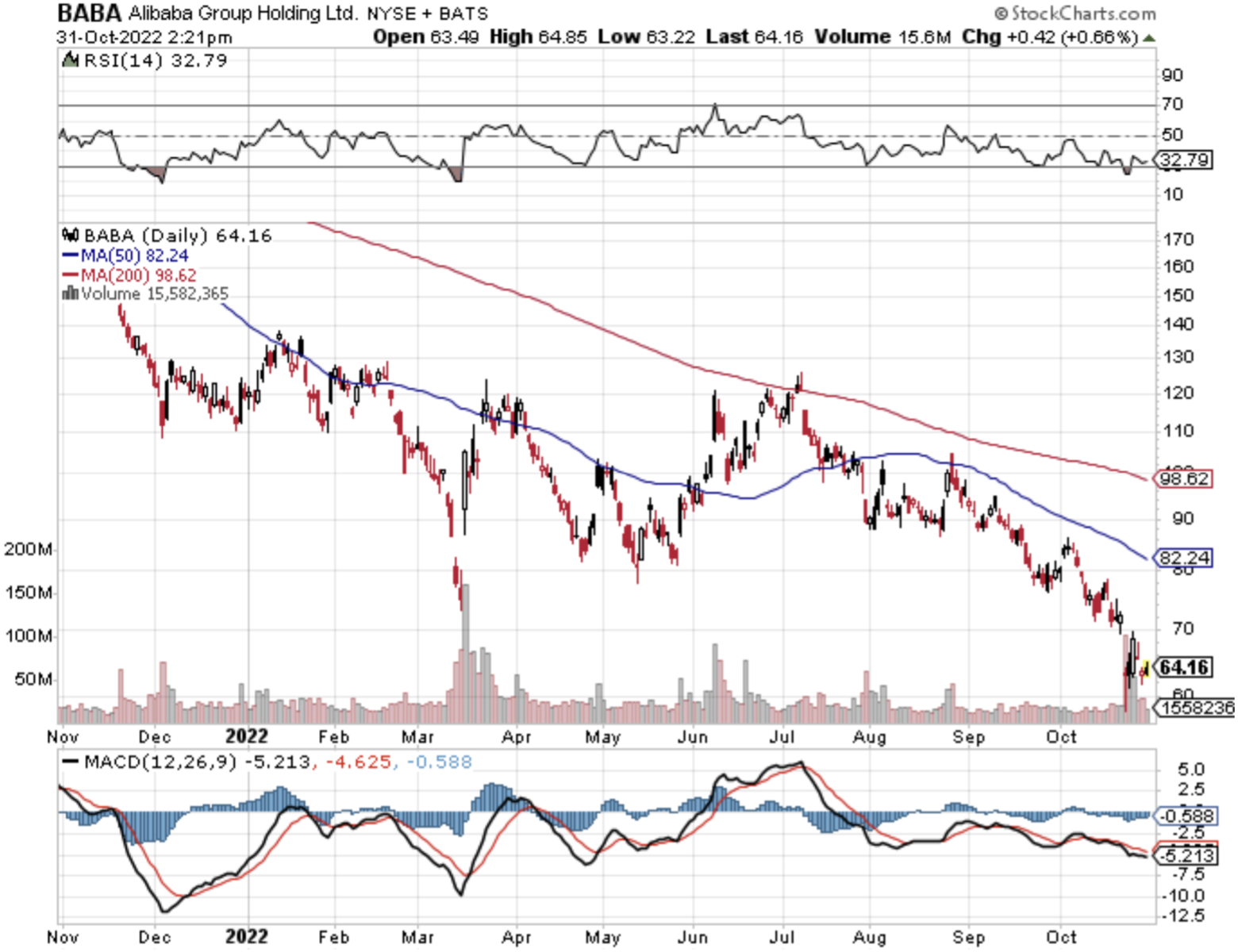
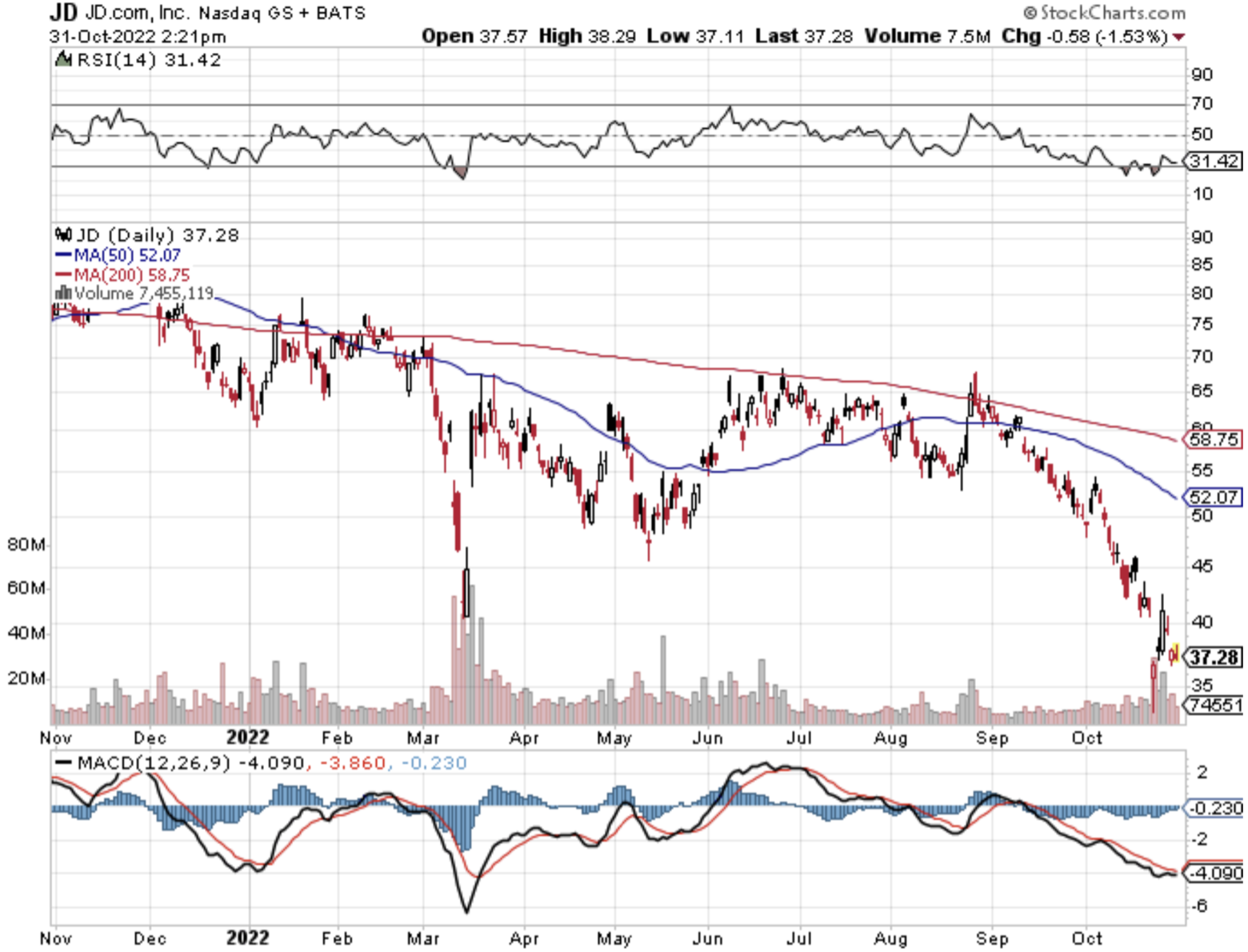
Global Market Comments
August 5, 2021
Fiat Lux
Featured Trade:
(THE NEW AI BOOK THAT INVESTORS ARE SCRAMBLING FOR),
(GOOG), (FB), (AMZN), MSFT), (BABA), (BIDU),
(TENCENT), (TSLA), (NVDA), (AMD), (MU), (LRCX)

A better headline for this piece would be “The Future of You,” as artificial intelligence is about to become so integral to your work, your investment portfolio, and even your very existence that you won’t be able to live without it, quite literally.
Well, do I have some great news for you. A blockbuster book about the state of play on all things AI will be released on September 25, and I managed to obtain and read an advanced copy. It is entitled: AI Superpowers: China, Silicon Valley, and the New World Order by Dr. Kai-Fu Lee.
The bottom line: The future is even more unbelievable than you remotely imagined. We are at the very early days of this giant megatrend, and the investment opportunities will be nothing less than spectacular.
And here is a barn burner. The price of AI is dropping fast as hundreds of thousands of new programmers pour into the field. Those $10 million signing bonuses are about to become a thing of the past.
Dr. Lee is certainly someone to take seriously. He obtained one of the first Ph.D.’s in AI from Carnegie Mellon University. He was the president of Google (GOOG) China and put in stints at Microsoft (MSFT) and Apple (AAPL). Today, he is the CEO of Sinovation Ventures, the largest AI venture capital firm in China, and is a board director of Alibaba (BABA).
AI is nothing more than deep learning, or super pattern recognition. Dr. Lee dates the onset of artificial intelligence to 1952, when an IBM mainframe computer learned to play checkers and beat human opponents. By 1955, it learned to develop strategies on its own.
Dr. Lee sees the AI field ultimately divided into two spheres of dominance, the U.S. and China. No one else is devoting a fraction of the resources needed to become a serious player. The good news is that Russia and Iran are nowhere in the game.
While the U.S. dominates in the original theory and algorithms that founded AI, China is about to take the lead in applications. It can do this because it has access to mountains of data that dwarf those available in America. China processes three times more mobile phones, five times more Internet customers, 10 times more eat-out orders, and 50 times more mobile transactions. In a future where data is currency, this is huge.
The wake-up call for China in applications took place two years ago when U.S. and Korean AI programs beat grandmasters in the traditional Chinese game of Go. Long a goal of AI programmers, this great leap forward took place 20 years earlier than had been anticipated. This created an AI stampede in the Middle Kingdom that led to the current bubble.
The result has been applications that are still in the realm of science fiction in the U.S. The Chinese equivalent of eBay (EBAY), Taobao, doesn’t charge fees because its customer base is so big it can remain profitable on ad revenues only. Want to be more beautiful in your selfies sent to friends? A Chinese app will do that for you, Beauty Plus.
The Chinese equivalent of Yelp, Dianping, has 600,000 deliverymen on mopeds. The number of takeout meals is so vast that it has been able to drop delivery costs from $6 a meal to 60 cents. As a result, traditional restaurants are dying out in China.
Teachers in Chinese schools no longer take attendance. Students are checked off when they enter the classroom by facial recognition software. And heaven help you if you jaywalk in a Chinese city. Similar software will automatically issue you a citation with a fine and send it to your home.
Credit card fraud is actually on the decline in China as dubious transactions are blocked by facial matching software. The bank simply calls you, asks you to look into your phone, takes your picture, and then matches it with the image they have on file.
Dr. Lee sees AI unfolding in four waves, and there are currently companies operating in every one of these (see graph below):
1) Internet AI
The creation of black boxes and specialized algorithms opened the door to monetizing code. This was the path for today’s giants that dominate online commerce today, Google (GOOG), Amazon (AMZN), JD.com (JD), and Facebook (FB). Alibaba (BABA), Baidu (BIDU), and Tencent followed.
2) Business AI
Think big data. This is the era we just entered, where massive data from online customers, financial transactions, and health care led to the writing of new algorithms that maximize profitability. Suddenly, companies can turn magic knobs to achieve desired goals, such as stepping up penetration or monetization.
3) Perception AI
Using trillions of sensors worldwide, analog data on any movement, facial expression, sound, and image are converted into digital data, and then mined for conclusions by more advanced algorithms. Cameras are suddenly everywhere. Amazon’s Alexa is the first step in this process, where your conversations are recorded and then mined for keywords about your every want and desire.
Think of autonomous fast food where you walk in your local joint and it immediately recognizes you, offers you your preferred dishes, and then auto bills your online account for your purchase. Amazon has already done this with a Whole Foods store in Seattle.
4) Autonomous AI
Think every kind of motion. AI will get applied to autonomous driving, local shuttles, factory forklifts, assembly lines, and inspections of every kind. Again, data and processing demand take an enormous leap upward. Tesla (TSLA), Waymo (GOOG), and Uber are already very active in this field.
The book focuses a lot on the future of work. Dr. Lee creates a four-part scatter chart predicting the viability of several types of skills based on optimization, compassion, creativity, and strategy (see below).
If you are a truck driver, in customer support, or a dishwasher, or engage in any other repetitive and redundant profession your outlook is grim. If you can supplement AI, such as a CEO, economist, or marketing head you’ll do fine. People who can do what AI can’t, such as teachers and artists, will prosper.
The Investment Angle
There have been only two ways to invest in AI until now. You can buy shares in any of the seven giants above, whose shares have already risen for 100- or 1,000-fold.
You can invest in the nets and bolts parts providers, such as NVIDIA (NVDA), Advanced Micro Devices (AMD), Micron Technology (MU), and Lam Research (LRCX), which provide the basic building blocks for the Internet infrastructure.
Fortunately for our paid subscribers, the Mad Hedge Trade Alert Service caught all of these very early.
What’s missing is the “in-between companies,” which are out of your reach because they are locked up in university labs or venture capital funds. Many of these never see the light of day as public companies because they get taken over by the tech giants above. It’s effectively a closed club that won’t let outsiders in. It’s a dilemma that vexes any serious technology investor.
When quantum computing arrives in a decade, you can take all the functionality above and multiply it by a trillion-fold, while costs drop a similar amount. That’s when things really get interesting. But then, I’ve seen trillion-fold increases in technology before.
I hope I live to see another.
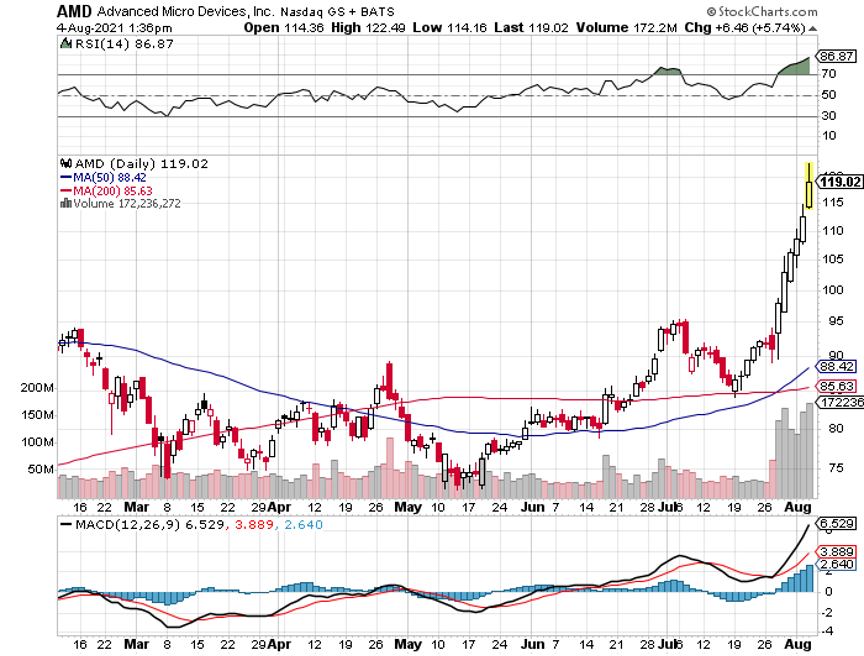
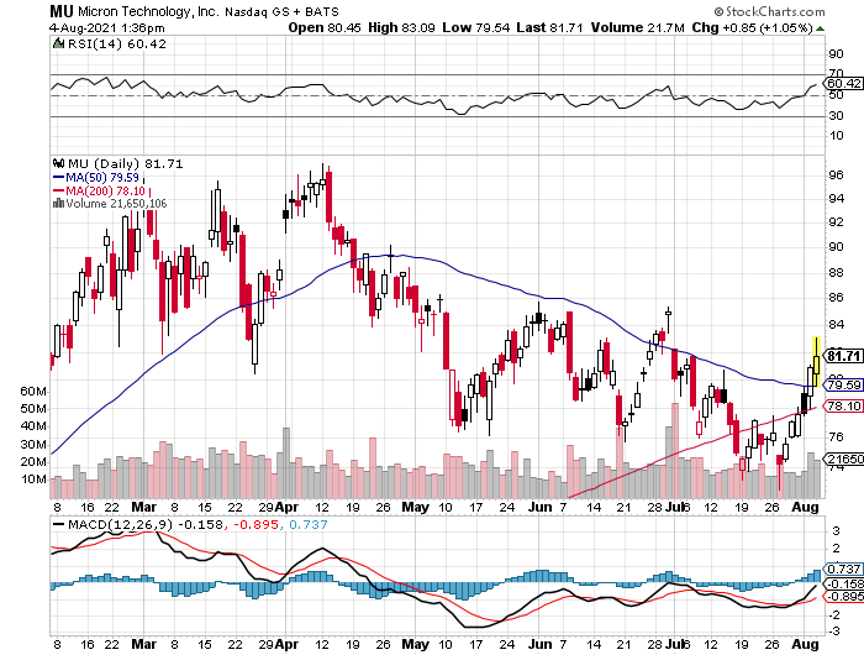
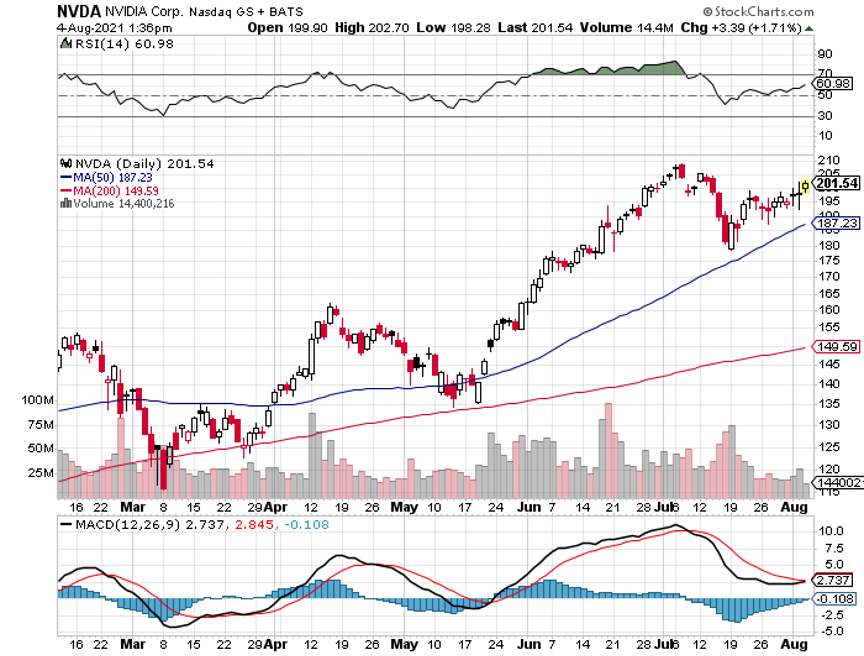
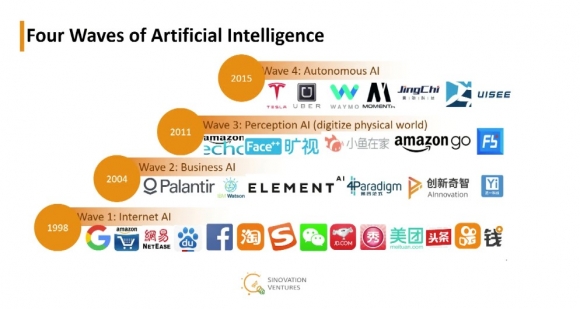
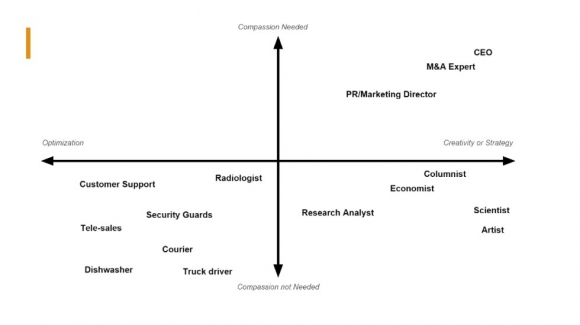
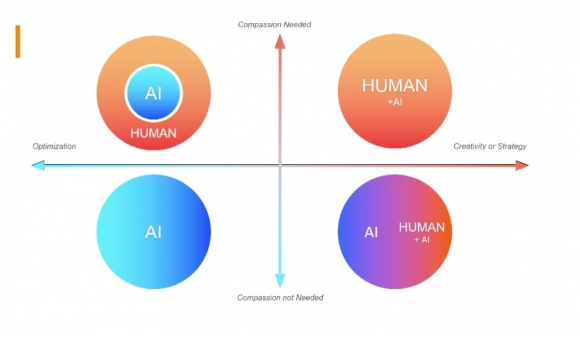

Global Market Comments
October 9, 2020
Fiat Lux
Featured Trade:
(THE NEW AI BOOK THAT INVESTORS ARE SCRAMBLING FOR),
(GOOG), (FB), (AMZN), MSFT), (BABA), (BIDU),
(TENCENT), (TSLA), (NVDA), (AMD), (MU), (LRCX)

Global Market Comments
October 1, 2019
Fiat Lux
Featured Trade:
(LAUNCHING THE NEW MAD HEDGE BIOTECH AND HEALTHCARE LETTER)
(THE NEW AI BOOK THAT INVESTORS ARE SCRAMBLING FOR),
(GOOG), (FB), (AMZN), MSFT), (BABA), (BIDU),
(TENCENT), (TSLA), (NVDA), (AMD), (MU), (LRCX)

If you can’t handle the heat, then get out of the kitchen.
Well, the kitchen is getting a little bit toasty right now.
Apple (AAPL) was handed down a demonstrably negative verdict when a regional Chinese court ruled that they infringed on two patents belonging to Qualcomm (QCOM).
The Qualcomm chips were connected to photo editing and another to swiping on a touch-screen device.
This means that Apple won’t be able to sell legacy iPhone models in China which is a damaging blow to revenue prospects because older iPhone models in China offer attractive price points to wallet-light Chinese.
And when you add this all up, the ban includes over half of the iPhones on sale in China.
In general, less affordable, sleeker, fresher iterations price out many Chinese who want a piece of the Apple dream.
Even though this was a nice victory for Qualcomm, it spells trouble for the broader tech sector.
Apple’s myriad of chip suppliers who have grappled with a torrent stream of woeful news this year relating to Apple’s supply of iPhones and supply forecast of iPhones are first on the chopping block.
It’s also an excruciating blow to American business in China and this could potentially rule out any American management taking future business trips to China.
Apple looks set to join its chip company compadres on the sidelines as a stock to avoid like the plague at the moment.
Apple is a great company and a perfect hold to eternity stock, but this is not the time to jump in and out of it.
Let me explain why.
The trade war centered on future technological hegemony is directly connected to the domination of current technology in artificial intelligence, chip development, and 5G.
China has been furiously catching up to American tech the last two decades through its vast program of foreign technological forced transfers and outright intellectual property theft.
I remember testing my first shoddy Chinese smartphone from the Chinese company Coolpad to gauge a sample of the burgeoning Chinese consumer device market on a blistering hot day in Beijing in the summer of 2010.
It was one of the first iterations of Chinese smartphones on the local market and the 3G smartphone was simply terrible.
The hardware was iffy, software was untenable, design was hodgepodge and it ceased working after 3 painstaking months of testing.
I breathed a sigh of relief because I knew it would be years before Chinese tech could ever produce something material.
Since then, China and the love given to its tech sector through the state protecting its homegrown companies have come a long way since those teething years filled with shabby products and inferior expertise of yesteryear.
Chinese cell phones are now comparable to iPhones for a fraction of the cost especially the new Huawei and Xiaomi models and the companies want recognition for their success.
I have interviewed scores of Huawei engineers who describe a life of grinding out a modest existence in mega-cities dotted around China.
They lament the 12-hour back-breaking work days, suffocating authoritarian management style, and the 3am on-call staff meetings, but they rejoice in the accomplishment of collecting that down payment for a standard Chinese apartment in a subpar constructed building.
They earn 30% of what Apple engineers make per year just to seize an average life in a second-tier Chinese city.
They don’t complain and accept it as a consequence of cut-throat competition in a country of 1.3 billion trying to hustle the best they can.
These unbearable timelines and the crunch to develop the national brand of Huawei and its other protected tech behemoths is how China rose up from the ashes of irrelevancy to become arguably competitive with the American tech machine that is Silicon Valley.
Even through all of the local hyper-growth, there was one unwritten rule that allowed one squeaky clean American company from Cupertino to evade all of the fractious competition and make an absolute killing in China.
Apple was protected in China before until now that is.
I find it dubious that the timing of the court verdict was the first business day after the arrest of CFO of Huawei Meng Wanzhou.
By connecting the dots, this appears as if it was an indirect ruling from the higher-ups signaling that Apple won’t be handed a free pass anymore and a warning shot fired to Washington.
Even worse, the Chinese regulatory environment is opaque at best-giving discretion to Chinese authorities to do as they see fit.
The opaque nature of Chinese regulation can draw out cases for years potentially drowning out the sales of iPhones and banishing Apple and its products in China to the history books.
That is the worst-case scenario that probably won’t happen.
For Apple to even appeal this ruling offers Steve Jobs' brainchild a rare dose of reality in China, and the bruised Apple brand will go back to the drawing board after receiving severe harm to its previous image of an ultra-luxury brand on the Chinese mainland.
For other American companies, there is no way to flush out additional clarity, and they will get stonewalled if they want more details regarding the path forward and that in itself will damage the price action of stocks tilted towards China because of the wave of uncertainty.
At the extreme minimum, this escalation of pressure will make it arduous to maneuver to some sort of trade agreement let alone in the abbreviated 90-day window agreed on in Buenos Aires.
The Chinese national psyche cares a great deal about saving face and this dig at its national prize will be hard to forget.
And China has a habit at looking at these types of events as inclusive actions tallied up broadly inside a comprehensive portfolio labeled and pigeonholed as America, Canada, and so on.
This conspicuous move has pushed forward Canada into the forefront of the firing line which could become the silver lining to this quagmire because Canada will have more incentive to join in on the China rebukes with America if they get blacklisted by Beijing.
Uniting together as one pan-North American and the European task force would be the best method to combat China’s stealthy business acumen whose capital and influence are far-flung and hard to quantify because of its various gateways to global western pressure points.
I can tell you right now that after doing a quick jaunt of Belarus, the Ukraine, and Hungary this winter, China’s deep pockets and nationals have completely taken over Central and Eastern Europe.
Chinese companies and products are plastered all over the place in each Russified city center and cityscapes built in the Soviet era.
Chinese students and workers have flooded these markets as they line up around the fringes of the Western world armed with gobs of capital and a land-grab mentality that borders Amazon’s ambition.
The Budapest property market has been cornered by Chinese citizens looking for the cheapest entry point to permanent residence in the Eurozone.
If you want to rent a flat in Budapest, odds are a Chinese owner will be glad to accept your monthly rent payments.
China believes that to truly have its tentacles deep inside the Western apparatus, they must initially corner the peripheries of the Western World that thirst for capital to build up local economies to match the power and stature of the Western big boys.
This has all added up to the Chinese government having an influential voice in European affairs because they have direct sway with conservative Prime Minister of Hungary Viktor Orban who has accepted Chinese capital.
US executives are praying to the celestial heavens that Meng is not extradited to America and made the scapegoat of the broader trade war.
This would be a bitter pill to swallow for Huawei’s founder Ren Zheng Fei whose family is considered royalty inside the upper-level Chinese establishment.
I assume that Ren will not back down quietly and is pushing and pulling the behind-the-scenes levers to do what he can for his daughter.
What does this all mean?
Headline risk has shot through the roof and investors could hear any day of the rumblings to the next chapter of the trade saga that is enveloping more and more corporate collateral damage.
Apple’s next quarter’s earnings are also on the line, and CEO of Apple Tim Cook could conveniently use it as a throwaway quarter hyping its progression as a new software and subscriptions company which is indeed in the works.
I figure this is the base case for Apple especially if there is no quick solution to this new iPhone ban.
The transition has been dramatically painful and happened a year or two too early for Apple’s liking.
Consequently, Apple reigning in its expectations has crushed the stock recently.
Certain global banks could set to be punished after the Wall Street Journal reported that HSBC and Standard Chartered facilitated the illegal payments for Huawei.
The British bank problems don’t stop there with Britain as a country barreling towards a complete ban of Huawei products after New Zealand just announced their own ban.
The three biggest Japanese telecommunication companies dumped fuel on Huawei’s bonfire citing security issues for excluding Huawei products from Japanese 5G development.
The roller-coaster action could also give impetus to Chairman Xi to execute a power grab on Chinese domestic technology sector gifting him additional control over tech behemoths in the name of national security fortifying his multiplying power in China.
He did the same with the People Liberation’s Army and I see no reason why he wouldn’t do the same with the Chinese tech sector especially if western countries avoid Huawei products.
The Chinese regulatory presence has already reared its ugly head banning new video game licenses to Tencent slashing revenue streams in 2018.
That is why Tencent shares have grossly underperformed this year.
Theoretically, Xi could use this moment as a springboard to seize the reigns of Huawei citing illegal payments to Iran which would calm the trade tensions but beef up his clout in the tech community, a net negative for Silicon Valley.
In any case, there is substantial amount of uncertainty permeating the heart of the technology movement that could potentially splinter off violently into an American tech and Chinese tech world.
This hard landing would deprive China-based revenue and kill supply chains for American technology that have spent decades procuring these intricate systems.
For Chinese technology, they could be cut off from the important components required to develop the technology and chips they need to achieve its “Made in China 2025” state-subsidized targets aimed at rapidly expanding its high-tech sectors and developing its advanced manufacturing base.
The next few months will reshape the 2019 Silicon Valley landscape and certain companies are hoping their business models aren’t fully destroyed.
I can’t lie but I saw this coming when I became aware of the complicated relationship between foreign tech companies and its precious Chinese revenue, and I also never bought another Coolpad smartphone.
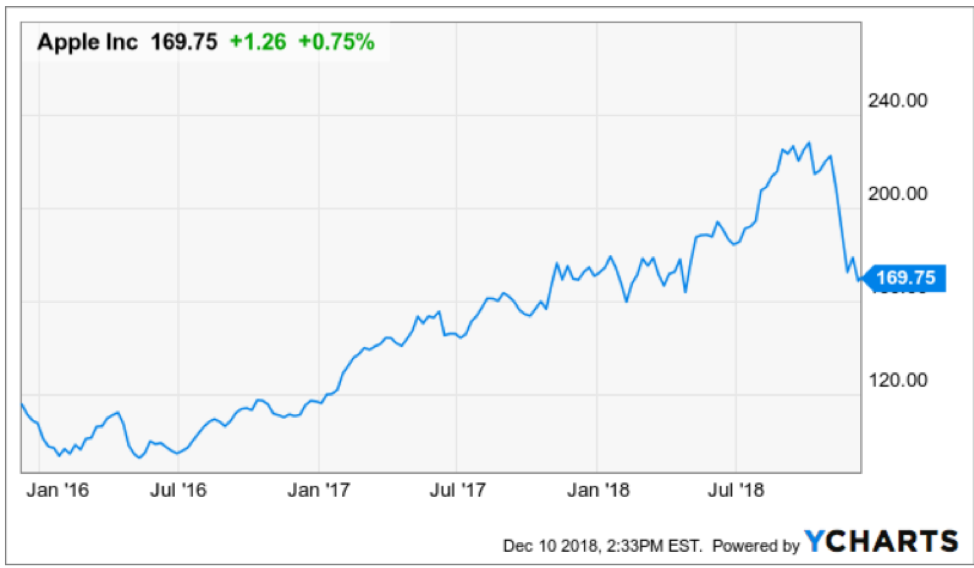
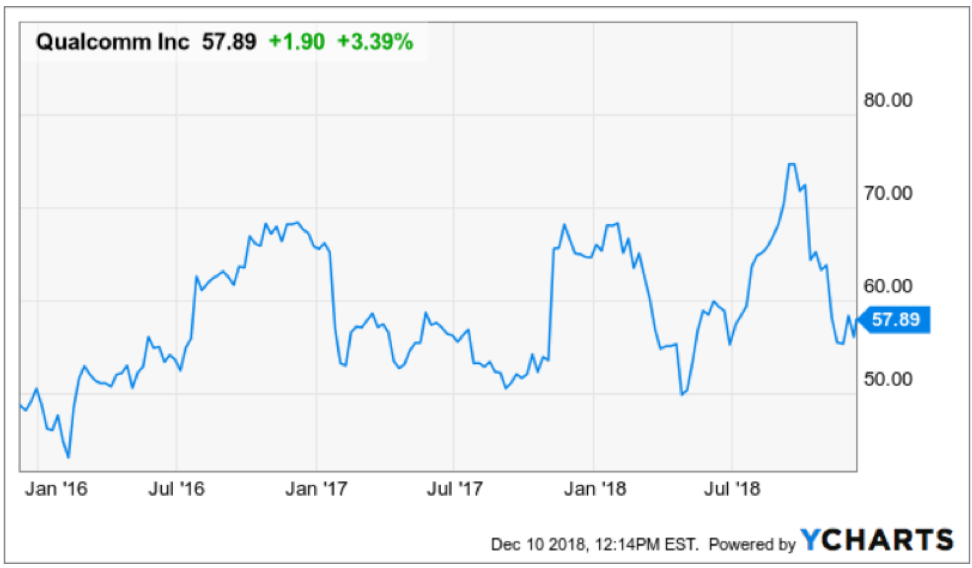
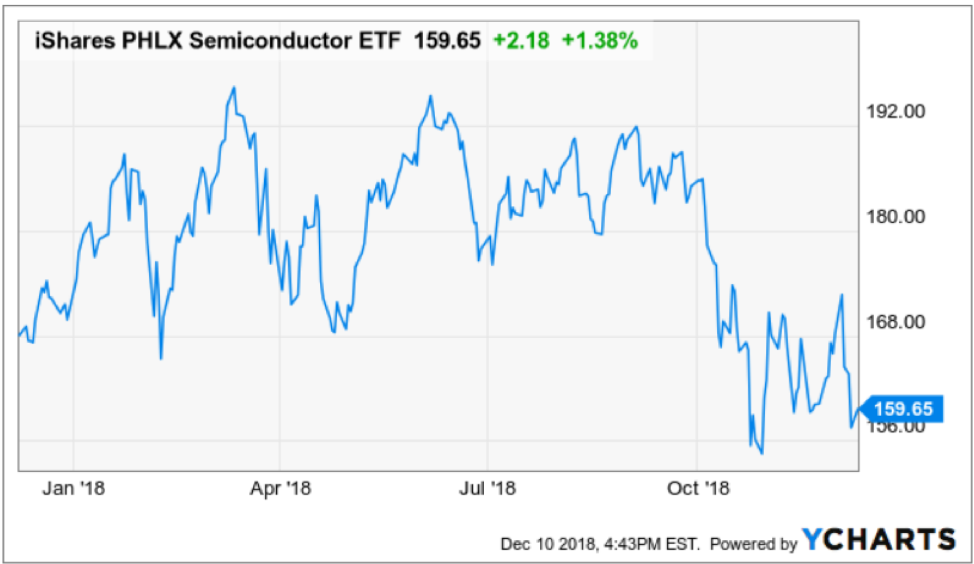
Global Market Comments
September 12, 2018
Fiat Lux
THE FUTURE OF AI ISSUE
Featured Trade:
(THE NEW AI BOOK THAT INVESTORS ARE SCRAMBLING FOR),
(GOOG), (FB), (AMZN), MSFT), (BABA), (BIDU),
(TENCENT), (TSLA), (NVDA), (AMD), (MU), (LRCX)

Mad Hedge Technology Letter
April 11, 2018
Fiat Lux
Featured Trade:
(WHY YOU SHOULD BE BETTING THE RANCH ON TECHNOLOGY),
(AMZN), (NFLX), (FB), (Samsung), (Tencent)

Global IT spending is forecasted to surpass $3.7 trillion in 2018, a boost of 6.2% YOY, according to a report released by leading technology research firm Gartner, Inc. (IT).
This year is the best growth rate forecasted since 2007, and is a precursor to a period of flourishing IT growth.
IT budgetary resilience is oddly occurring in the face of a tech backlash engulfing Mark Zuckerberg as collateral damage during higher than normal volatility due to an unstable geo-political environment and nonstop chaos in the White House.
Zuckerberg's reputation has been torn to shreds by the media and politicians alike.
Tech has had better weeks and months, for instance as this past January when tech stocks went up every day. Facebook (FB) still had a great business model in January as well.
The biggest takeaway from the report was the outsized capital investments going into enterprise software, which spurs on exponential business formation.
Enterprise software will successfully record its highest spend rate increasing by 11.1% YOY to $391 billion. This is far and away an abnormally fast pace of increase, but is completely justified based on every brick and mortar migrating toward data harnessing.
The software industry will benefit immensely by the universal digitization of all facets of life as software acts as the tool that businessmen use to propel companies to stardom.
Application software spending will healthily rise into 2019, and infrastructure software also will continue to grow, boosted by the revamping of laggard architecture.
Data center systems are predicted to grow 3.7% in 2018, down from 6.3 percent growth in 2017. The longer-term outlook continues to have challenges, particularly for the storage segment.
The lower relative rate of spend is exacerbated by the chip shortage for memory components, and prices have shot up faster than previously expected.
The new Samsung Galaxy 9 cost an additional $45 in semiconductor chip costs because of the importunate costs that sabotage cost structures.
Exorbitant pricing was set to subside in the early part of 2018, but the dire shortage of chips is here to stay until the end of 2018.
Even though the supply side has ramped up 30%, demand is far outpacing supply, spoiling any chance for tech devices to be made on the cheap.
Global spend for digital devices will grow in 2018, reaching $706 billion, an increase of 6.6 percent from 2017. Not only will we see the standard characters such as phones and tablets, but new creative ways to produce devices in the micro-variety will soon populate our shores.
Amazon Alexa and Apple's HomePod are just the beginning and will spawn micro-devices that would fit nicely into a flashy James Bond film.
The demand for ultra-mobile premium smartphones will slow in 2018 as more consumers delay their upgrade and feel comfortable using older devices -- kind of like a smashed-up Volvo station wagon handed down from sibling to sibling.
In times of uncertainty, corporations hold back spending until the near-term variables can be flushed out, and unforeseen costs causing operational turbulence can be anticipated.
However, the industry has brushed aside the turmoil that has attempted to infiltrate the core growth story.
Investors cannot overlook that total tech spending growth for 2018 is the highest in the past 15 years.
Next quarter's earnings are now on tap, and investors will turn to fundamentals as a cheat sheet for what's in store.
It's undeniable that currently tech stocks aren't cheap anymore. They are also more expensive than they were at the beginning of the year barring Facebook and a few other stragglers.
The momentum has intensified with the five biggest tech firms accounting for more than 14% of the S&P 500 index's weighting.
Tech's relative performance has fended off the bears with PE multiples down a paltry 4.9% this year compared to the cratering of 11.4% in the general market.
And tech is still trading at a tiny fraction of the crisis of the dot-com era.
The outsized reinvestments back into business models don't tell the tale of an industry brought down to its knees begging for salvation.
Look no further than across the Pacific Ocean. Samsung Electronics Co. represents almost 25% in South Korea's Kospi index. At the same time, Asia's most valuable company, Tencent Holdings, makes up almost a 10% weighting in Hong Kong's Hang Seng Index.
Back stateside, about 90% of US tech firms beat revenue estimates in the last quarter of 2017, marking the best success rate for any industry.
The positive sentiment has continued into this year with wildly bullish expectations led by the FANG stocks.
The broader volatility is a gift to investors who hesitated and missed the monster rally that has graced tech the past few years.
Tech is vital to emerging markets. And this is the first year since 2004 that tech constitutes the biggest sector in the MSCI Emerging Markets Index blowing past financials.
Tech had a 28% weighting at the end of 2017, the weighting more than doubling from six years ago.
As it stands today, tech enjoys light regulation and by a long mile. Tech is actually the least regulated industry in America and has used this period of light regulation to stack up profits to the sky.
Banks are nine times more regulated than tech companies, and manufacturing companies are five times more regulated.
Legislation such as Dodd-Frank has done a lot to taper the excesses of the sub-prime frenzy that almost took down Wall Street.
The lean regulation has helped tech companies such as Facebook and Google build a gilt-edged competitive advantage that has been exploited to full effect.
After the Fed closed the curtains on its QE program, tech and its earnings are the sturdiest pillar of the nine-year bull market.
The Street is reliant on the big players to earn its crust of bread and show investors that tech isn't just a flash in the pan.
The two numbers acting as the de-facto indicators of the health of the overall economy are Netflix's subscriber growth numbers and Amazon's AWS Cloud revenue.
These two companies do not focus on profits and are the prototypical tech growth companies.
If they beat on these metrics, the rest of tech should follow suit.
The market is entirely dependent on big tech to drag investors through the time of transition. My bet is that tech will over-deliver booking stellar earnings.
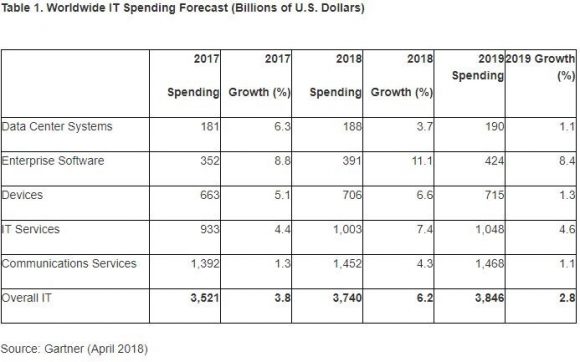

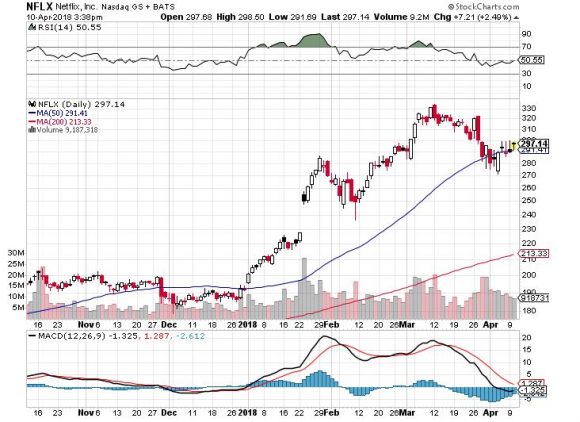
__________________________________________________________________________________________________
Quote of the Day
"By giving the people the power to share, we're making the world more transparent." - said Facebook CEO Mark Zuckerberg

Legal Disclaimer
There is a very high degree of risk involved in trading. Past results are not indicative of future returns. MadHedgeFundTrader.com and all individuals affiliated with this site assume no responsibilities for your trading and investment results. The indicators, strategies, columns, articles and all other features are for educational purposes only and should not be construed as investment advice. Information for futures trading observations are obtained from sources believed to be reliable, but we do not warrant its completeness or accuracy, or warrant any results from the use of the information. Your use of the trading observations is entirely at your own risk and it is your sole responsibility to evaluate the accuracy, completeness and usefulness of the information. You must assess the risk of any trade with your broker and make your own independent decisions regarding any securities mentioned herein. Affiliates of MadHedgeFundTrader.com may have a position or effect transactions in the securities described herein (or options thereon) and/or otherwise employ trading strategies that may be consistent or inconsistent with the provided strategies.
This site uses cookies. By continuing to browse the site, you are agreeing to our use of cookies.
OKLearn moreWe may request cookies to be set on your device. We use cookies to let us know when you visit our websites, how you interact with us, to enrich your user experience, and to customize your relationship with our website.
Click on the different category headings to find out more. You can also change some of your preferences. Note that blocking some types of cookies may impact your experience on our websites and the services we are able to offer.
These cookies are strictly necessary to provide you with services available through our website and to use some of its features.
Because these cookies are strictly necessary to deliver the website, refuseing them will have impact how our site functions. You always can block or delete cookies by changing your browser settings and force blocking all cookies on this website. But this will always prompt you to accept/refuse cookies when revisiting our site.
We fully respect if you want to refuse cookies but to avoid asking you again and again kindly allow us to store a cookie for that. You are free to opt out any time or opt in for other cookies to get a better experience. If you refuse cookies we will remove all set cookies in our domain.
We provide you with a list of stored cookies on your computer in our domain so you can check what we stored. Due to security reasons we are not able to show or modify cookies from other domains. You can check these in your browser security settings.
These cookies collect information that is used either in aggregate form to help us understand how our website is being used or how effective our marketing campaigns are, or to help us customize our website and application for you in order to enhance your experience.
If you do not want that we track your visist to our site you can disable tracking in your browser here:
We also use different external services like Google Webfonts, Google Maps, and external Video providers. Since these providers may collect personal data like your IP address we allow you to block them here. Please be aware that this might heavily reduce the functionality and appearance of our site. Changes will take effect once you reload the page.
Google Webfont Settings:
Google Map Settings:
Vimeo and Youtube video embeds:
